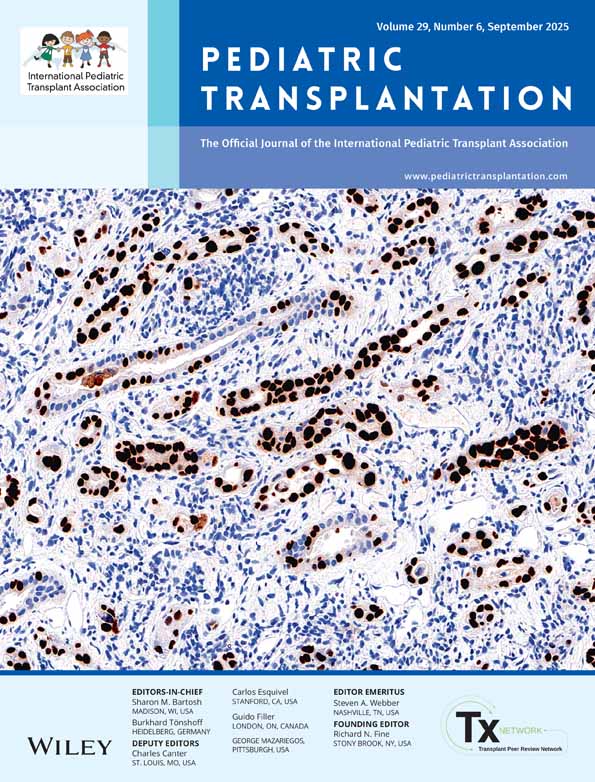A decade of living donor transplantation in North American children: The 1998 Annual Report of the North American Pediatric Renal Transplant Cooperative Study (NAPRTCS) *
The North American Pediatric Renal Transplant Cooperative Study (NAPRTCS) is a voluntary collaborative effort comprising over 150 pediatric renal disease treatment centers in the United States, Canada, Mexico and Costa Rica. It is supported by major, unrestricted educational grants from Novartis, AMGEN, and Genentech. Participating NAPRTCS centers are listed in Appendix 1.
Abstract
Abstract: This report of the North American Pediatric Renal Transplant Cooperative Study (NAPRTCS) covers the years 1987–1997, and analyzes data on 2904 living donor (LD) transplants performed in 2779 patients. Since 1991, approximately 300 LD transplants have been performed each year at the participating centers of the NAPRTCS. Caucasian children account for 72% of all LD recipients while African–American children constitute only 11%. There has been a gradual decline in the number of transplants performed in children under the age of 6 years from a peak of 30% in 1987, to 21% in 1997. Preoperative calcineurin inhibitor therapy has dropped from 71% in 1987 to 38% in 1997. Through 1996, at six months post-transplant 97% of recipients were receiving prednisone, 88% were maintained on cyclosporin A, and 79% were receiving azathioprine. Of patients transplanted in 1997, 47% are maintained on mycophenolate and 10% are maintained on tacrolimus. By day 15, 20% of index transplant patients have had an acute rejection and by the end of the first year 47% have had a rejection episode. Among patients transplanted in 1995–1996, 40% had a rejection in the first year. Nine per cent of rejection episodes are irreversible in children under 2 years of age and 5% of the episodes are irreversible in 2–5-year-old children. Estimated graft survival probability at 1 year is 91%, at 3 years it is 84% and at 5 years it is 78.5%. Rejection accounts for 33% of graft loss and recurrence constitutes another 10%. Influential prognostic variables for graft survival are race (African–American vs. others, relative risk (RR) = 2.0, p < 0.001), > 5 random transfusions (RR = 1.6, p < 0.001), T-cell induction therapy (RR = 0.78, p = 0.01), and later year of entry (1989–1990 vs. 1994–1995, RR = 0.95, p = 0.004). Patient survival at 1 and 3 years was 97% and 96.5%, respectively, however, the 3-year patient survival of children under 2 years was 89%. The mean height deficit at baseline (n = 2677) was − 1.86, at 1 year post-transplant (n = 1459) it was − 1.80, and at 5 years post-transplant (n = 592) it was − 2.06. This report, devoted specifically to LD pediatric transplants, raises issues regarding the use of immunosuppression such as preoperative calcineurin inhibitors and T-cell antibodies. Studies to address the high incidence of chronic rejection and recurrence of original disease are necessary. Additional areas of concern are the high infant mortality and continued growth retardation post-transplantation.




